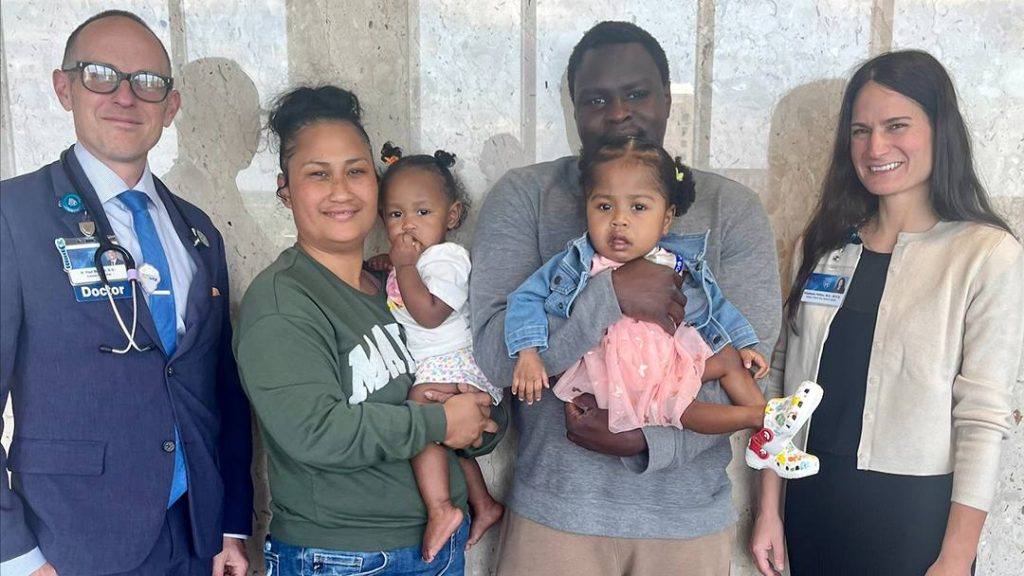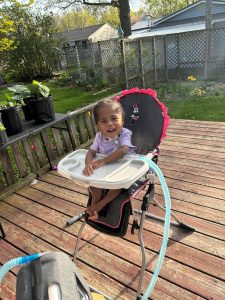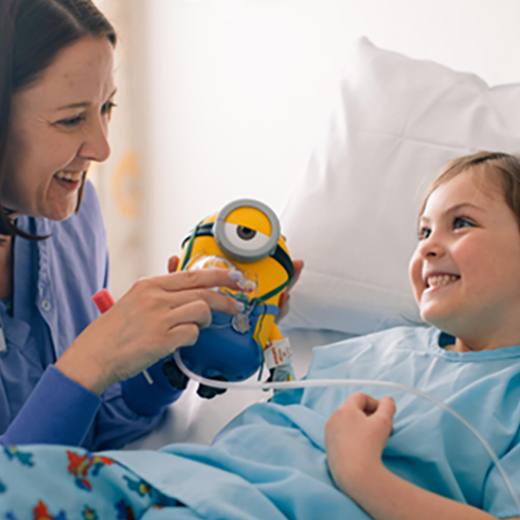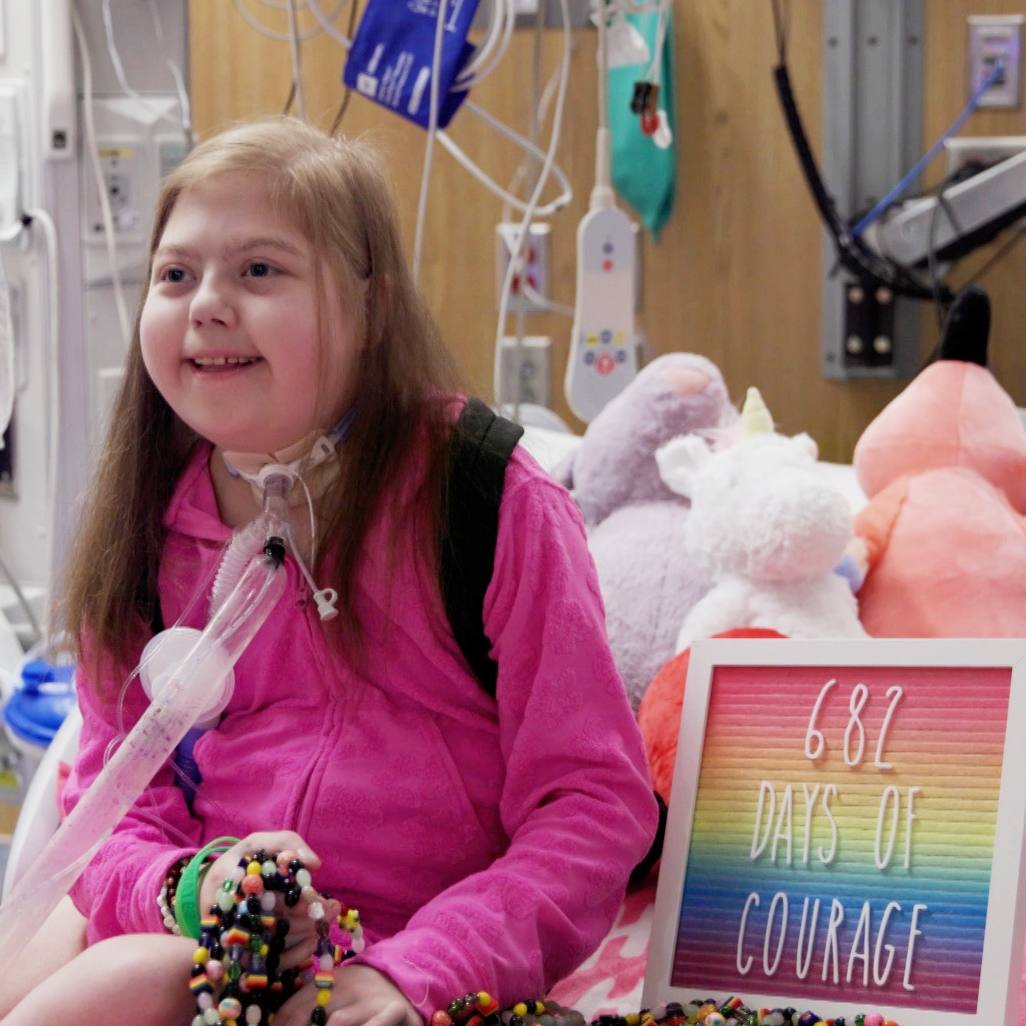-
Baby Makrii breathes easier after innovative airway surgery at Mayo Clinic

When Swina Taylor was two months pregnant, she chose a name for her baby: Makrii. In Micronesia, where Swina hails from, the name means "strong" and typically is given to boys.
From the day of her birth in April 2022, Makrii Omot has lived up to that name, amazing her multidisciplinary pediatric care team with her strength and determination.
Discovering congenital complications
From the start, Makrii needed those characteristics. At 28 weeks of pregnancy, Swina had an ultrasound that revealed something completely unexpected — abnormalities indicating that Makrii's diaphragm hadn't fully developed. The condition is called congenital diaphragmatic hernia (CDH) and occurs in about 1 in 5,000-8,000 births annually.
The diaphragm is a muscle separating the chest and the abdomen and is the primary muscle for breathing. If the separation isn't complete, organs from the abdomen can move into the chest, press against the lungs and affect their development.
Not only can this condition cause the lungs to be smaller and immature, but it also can lead to pulmonary hypertension, or high blood pressure, in the lungs. Both situations make it difficult for the baby to breathe after delivery and can increase the risk of severe decompensation (organ failure). A baby's chances of surviving with CDH are low unless doctors act quickly to correct the condition.
Creating a working diaphragm
After receiving the diagnosis at Mayo Clinic Health System in Austin, Minnesota, Swina and her family moved to Rochester to be closer to Makrii's pediatric care team.
Makrii was born at 36 weeks at Mayo Clinic in Rochester. To help her breathe, she was placed on extracorporeal membrane oxygenation (ECMO) by Cardiovascular Surgery.
At one day old, while Makrii was still on ECMO, D. Dean Potter, M.D., a pediatric surgeon, performed the first surgery to correct her CDH. The surgery involved shifting her abdominal organs back into place and covering the large hole (hernia) in her diaphragm with a synthetic patch.
"The hernia is relatively easy to repair, and the recovery for patients is fairly straightforward," says Dr. Potter. "But the real consequences of CDH are its effect on lung development."
Helping Makrii breathe
For Makrii, those consequences were severe, resulting in tracheobronchomalacia (TBM), an airway disorder of the main bronchial tubes that causes them to be abnormally floppy. Even with sedation and maximum support from a ventilator, Makrii's trachea and airways tended to collapse, causing her oxygen levels and heart rate to drop.
"Makrii was very sick," says pediatric surgeon Stephanie Polites, M.D. "Tracheobronchomalacia can improve over time as the cartilage in the trachea strengthens, but Makrii's condition was so severe, we didn't have time to wait."
For her mom, Swina, and dad, Naney Omot, enduring the ups and downs of Makrii's condition was frightening and draining.
"We got to the point where we thought, 'Just let it be. If God wants her to be alive, she'll live,'" says Swina. "We knew she was in the best place, with the people who had kept her alive since she was born."
Crafting an unconventional solution
Dr. Polites quickly pulled together a team of Mayo Clinic experts from several specialties to find a solution for Makrii.
"She faced such tough odds but was so brave that she inspired the team to think outside the box. The surgical procedures that we perform more commonly for tracheomalacia wouldn't have been sufficient," says Dr. Polites.
"The full length of Makrii's trachea was floppy, and the bronchi on both sides were severely affected," says pediatric pulmonologist Paul Boesch, D.O. "Her airway was about the diameter of a pencil, and even providing structural support with an extra-long tracheostomy tube inside her trachea wasn't keeping it from closing."
The multidisciplinary team needed to find a solution that would support an airway segment longer than the trachea, including the bronchial tubes to each lung. They decided one potential option, inserting devices like stents inside the multiple small airways, wouldn't be effective and would cause other problems.
To provide maximum support of the trachea and main bronchial tubes without injuring Makrii's small airways, the team developed a plan to craft a customized external splint, like a partial cast, around the airway. To prevent collapse, they would stitch the trachea to the sternum in the front and the spine in the back.
Dr. Polites' team relied on Mayo Clinic's 3D Anatomic Modeling Laboratories to recreate Makrii's anatomy based on the results of pulmonary imaging. This 3D model allowed the team to better understand what would be needed during surgery.
"Combining these three procedures and the individualized approach to Makrii's complex anatomy made the surgery exceptionally innovative," says Dr. Boesch.
Assembling the team for surgery
Splinting of the trachea is a rare procedure performed at only a few hospitals in the U.S. Makrii would be Mayo Clinic’s first pediatric patient to undergo this operation.
On October 13, 2022, everyone was ready. Makrii was placed on ECMO again to support her heart and lungs during the complex surgery.
Dr. Polites molded warmed plates of bioabsorbable material to create the splints and then secured the splints around the front of Makrii’s airways. The splints would maintain the shape of the airways and keep them open, allowing Makrii to breathe easier. The surgery was successful, and Makrii began to improve almost immediately.
Breathing easier, growing stronger

Now 2 years old, Makrii is at home and doing well. Her parents and grandmother share care duties such as managing her feeding tube and tracheostomy. She is spending less time on a ventilator, getting stronger every day and reaching developmental milestones.
Makrii's mother Swina says she's crawling, beginning to eat by mouth and is constantly learning new things. The supportive plates put in during surgery will be absorbed by Makrii's body over time as her airways become stronger and won't need to be removed.
"It was exciting, yet humbling, to work with such an exceptional team dedicated to getting Makrii better so that she could go home with her family, grow and develop," says Dr. Polites.
Thinking back on her choice of name for Makrii, Swina says, "I'm glad I kept 'Makrii' because she is strong. It matches how she is on the inside, the outside and how she will be as she grows."
Related Articles







